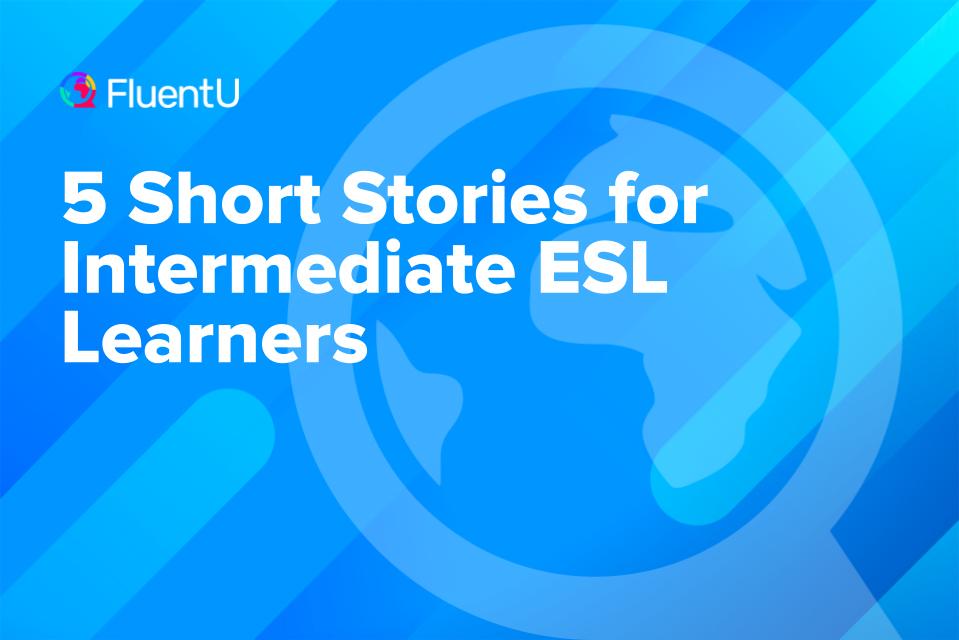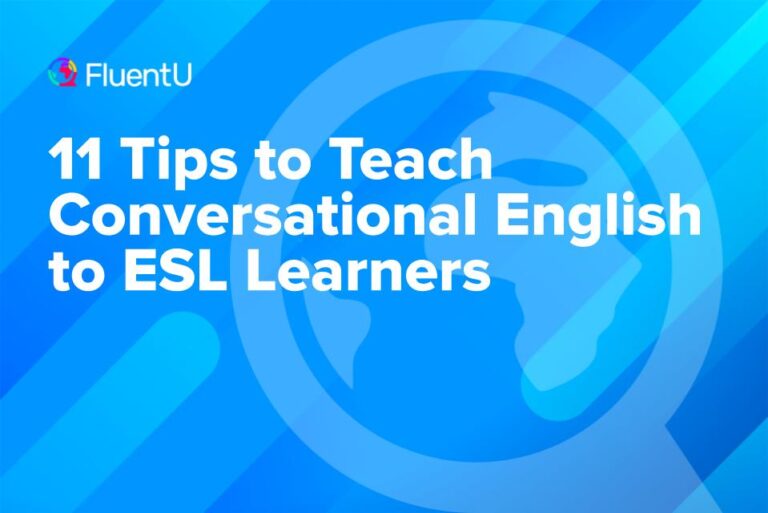5 Short Stories for Intermediate ESL Learners

Short stories can illuminate an atmosphere of discussion, enthusiasm and confidence among your ESL students. And whether you aim to paint a picture of fantasy or to bring history to life, the selection of stories below will serve up a healthy challenge for your intermediate-level English learners.
These particular stories are a bit more in-depth, packed with literary lightning that will fuel hearty discussions.
Download: This blog post is available as a convenient and portable PDF that you can take anywhere. Click here to get a copy. (Download)
1. “Confido” by Kurt Vonnegut
What it’s about: “Confido” features a lab assistant named Henry who invented Confido, a magical device that exposes people’s inner thoughts. Henry knew his invention would make him and his family wealthy, but the device also brought about the prospect of despair. Vonnegut’s “Confido” is about greed and the true needs of people, a subject perfect for discussion and debate.
How to use in class: A debate-minded lesson plan for this short story will focus on the greed and moral aspects. This is excellent for pair discussion, allowing your students to really draw out the content in the story from one another. Have one student support Henry’s decision to bury Confido, while the other is against it. Employ a few “for” and “against” questions to spark debate once your class has read and/or listened to the short story.
Possible questions:
- If you had a device like Confido, would you bury it like Henry did?
- What would be the reasons behind your decision to bury or keep the device?
- How could Confido be important to the world?
- How could Confido destroy the world?
- Is a life of being poor worth never introducing Confido to the public?
- Is having all the money in the world worth exposing Confido to the world?
Activity suggestions: Give each pair time to process the questions surrounding the short story. They can also write down a few notes important to their debate points. You can let each pair debate their points at their desks, or bring the debate to the center, allowing each pair to debate in front of the class to build more confidence.
2. “The Long Rain” by Ray Bradbury
What it’s about: “The Long Rain” by Ray Bradbury is often a favorite of science-fiction buffs. The story portrays four men deserted on the planet Venus. Bradbury depicts Venus as a planet with endless rain, though, which in turn drives the four men mad as they search desperately for shelter. One of the four men, the lieutenant, survives the endless rain of Venus by finding shelter.
How to use in class: The story ending has a speculative aspect that you could transform into a lively classroom discussion. Is the lieutenant’s shelter a delusion, or is it real? You can also open up classroom discussion regarding the deaths of the other three men in the story.
Possible questions:
- Is there a metaphor behind Bradbury’s story?
- What could the endless rain of Venus really represent?
- What does the lightning strike represent? Should the man have run? Should he have jumped?
- What is a mercy kill? Is it murder?
- In your opinion, is there such a thing as a moral mercy kill? What would you have done in a similar situation?
- How does Simmons’s life end? Is suicide a metaphor for anything within the story?
- What do you think about suicide?
- How do you know if the lieutenant has truly reached safe haven? Could it be a delusion?
- What is a delusion?
Activity suggestions: You can expand on insights as they come to light during the discussion. Your students will sharpen their ability to think and process English quickly as the discussion unfolds.
3. “Araby” by James Joyce
What it’s about: This short story by famed literary great James Joyce is indeed short, yet descriptive and full of exceptional metaphors for your students to analyze and discuss. It is about a young boy who is infatuated with a young girl, leading him to the promise of a gift, which is never purchased. The boy’s unrelenting vanity is later revealed as the boy’s obsession with the girl is represented by the promise of a gift.
How to use in class: In true Joyce fashion, the descriptive nature of the short story is an exceptional tool you can use in your lesson plan. For this activity, you will need to develop a short worksheet intended to kick off discussion among your student pairs. If developing and printing a worksheet is challenging, you can also read the questions aloud, letting your students dictate and hone their listening comprehension.
Possible questions:
- The short story ends with, “Gazing up into the darkness I saw myself as a creature driven and derided by vanity; and my eyes burned with anguish and anger.” What does vanity represent in this final sentence?
- How do you perceive vanity in your culture?
- Do you find that material objects represent more in your life or in the lives of your family, friends or colleagues?
- Joyce uses many descriptive passages to convey the feel of a room, a character in the story or a specific place unique to the story. Is this helpful to you when reading or listening?
- Using very descriptive passages, how would you describe the classroom?
- How would you describe your home or office?
Activity suggestions: Your student pairs can build discussion as they address each question. They will discover fresh ways to describe things in their everyday life, which may increase their use of adjectives, and also develop a new use for vocabulary words presented in past English lessons.
4. “Crazy Sunday” by F. Scott Fitzgerald
What it’s about: F. Scott Fitzgerald’s “Crazy Sunday” is about love, dishonor and the twists and turns associated with the many relationships people have in daily life. The main character Joel Cole falls in love with his friend Stella, who has been cheated on by her husband. However, upon the death of Stella’s husband, she realizes she truly loved him and Joel may not be a love at all, but a passing fling to hold on to.
How to use in class: In Section V of the story, the death of Stella’s husband comes to light and Joel is left to assist Stella in such a traumatic moment in her life. The vocabulary within the paragraphs and dialogue of Section V can develop a creative discussion and writing activity beneficial to your intermediate students.
You will need to identify several new vocabulary words for your students to develop definitions for, which will be used later in the group activity. Below you’ll find some suggestions.
Possible vocabulary:
- hanging about
- unrolled before him
- lulling
- innumerable
- inertly
- lie still
- sternly
- scheme
- temperament
- cynically
- get a hold of
- seized
- count on
Activity suggestions: Once you have compiled a list of 20 or more vocabulary words, have each group search the story for each word to know its context, and then develop a definition. Let students refer to a dictionary if needed. After they have collaborated on their vocabulary definitions, have each group begin to develop a new dialogue—with Joel and Stella as the main characters.
The dialogues should be short, and will act as a replacement to the story’s original ending. However, each group will eventually need to enact their dialogues in front of the class and explain why they chose the ending they did. This activity encompasses core discussion and collaboration skills with writing and reading as sub-skills.
5. “The Masque of the Red Death” by Edgar Allan Poe
What it’s about: Our final short story follows the main character Prince Prospero as he attempts to stay healthy during a plague. Prospero escapes to his abbey, along with many other wealthy figures. They have a party, in which “red death,” an unknown guest, appears and kills Prospero, along with all the members of the party. Poe’s “The Masque of the Red Death” is thought to have a metaphorical meaning, which surrounds the inevitability of death, regardless of power or wealth.
How to use in class: The notion of death, the wealthy and the powerful are perfect discussion points for your intermediate students to explore. You can use this story to dive deeper into the aspects of the content as it pertains to the metaphorical passages within it.
Possible questions:
- “The ‘Red Death’ had long devastated the country.” What does the “Red Death” represent in Poe’s story? Is it human, or could it be evil?
- “A strong and lofty wall girdled it in.” What is this passage referring to? What does this passage represent to the characters and you the reader?
- What color is represented in the seven rooms of the Prince’s home?
- Why do you think there were no red rooms?
- “It was in this apartment, also, that there stood against the western wall, a gigantic clock of ebony.” Where was this clock of ebony? What does the clock represent in the story? How is the clock significant to the story?
Activity suggestions: Your students will enjoy piecing together the hidden meanings within Poe’s words as they discuss the what and whys you present as challenges within your questions. Students may even find it useful to examine each line of the short story for hidden meanings and new vocabulary words as well.
Why Use Short Stories with Intermediate ESL Students
The days of “Little Red Riding Hood” have long passed, and your students are ready for short stories crafted by some of history’s most prolific writers.
- When you increase your students’ literature levels, the vital vocabulary will follow. Your students will journey down a beautifully worded path of fresh adjectives, nouns and verbs, as well as idioms, phrasal verbs and slang too.
- These short stories will also introduce your students to authors that remain discussed in universities and at coffee tables around the world. They will build confidence from these intermediate-level short stories. Once your students are familiar with a particular author, attempting one of their full-length novels becomes much more doable.
- The themes and topics from these stories lend themselves nicely to a variety of classroom activities. With challenge comes discussion, the cornerstone to intermediate lesson plans.
To tackle short stories in class, set up group or pair activities, highlight debate topics within the story, or open up the classroom for group discussion as well. For example, in “Confido” by Kurt Vonnegut, greed and morals are pinned against one another, which can stimulate a debate or opinionated discussion for your students.
If you’re after even more content to help connect your student to the native English world, you can supplement with English videos from FluentU.
FluentU takes authentic videos—like music videos, movie trailers, news and inspiring talks—and turns them into personalized language learning lessons.
You can try FluentU for free for 2 weeks. Check out the website or download the iOS app or Android app.
P.S. Click here to take advantage of our current sale! (Expires at the end of this month.)

The videos all come with study tools like quizzes and interactive subtitles. With these materials, you’ll be able to showcase even more of the creative English history and encourage your students to discuss a full range of exciting topics.
Let the literary masters of history come to life within your ESL classroom by developing discussion-based lesson plans around short stories. Beyond the five listed here, there is a wealth of short stories available online to draw from. You can easily transform delightful short stories into activities your eager intermediate English students will enjoy and learn from.
Let them unlock new ways to express themselves, explore literature, debate and share their opinions with others through short stories. Your students will undoubtedly obtain the ESL discussion skills vital for communicating in real-life situations.
And One More Thing...
If you like learning English through movies and online media, you should also check out FluentU. FluentU lets you learn English from popular talk shows, catchy music videos and funny commercials, as you can see here:
The FluentU app and website makes it really easy to watch English videos. There are captions that are interactive. That means you can tap on any word to see an image, definition, and useful examples.
For example, when you tap on the word "searching," you see this:
Learn all the vocabulary in any video with quizzes. Swipe left or right to see more examples for the word you’re learning.

FluentU helps you learn fast with useful questions and multiple examples. Learn more.
The best part? FluentU remembers the vocabulary that you’re learning. It gives you extra practice with difficult words—and reminds you when it’s time to review what you’ve learned. You have a truly personalized experience.
Start using the FluentU website on your computer or tablet or, better yet, download the FluentU app from the iTunes or Google Play store. Click here to take advantage of our current sale! (Expires at the end of this month.)
Download: This blog post is available as a convenient and portable PDF that you can take anywhere. Click here to get a copy. (Download)










